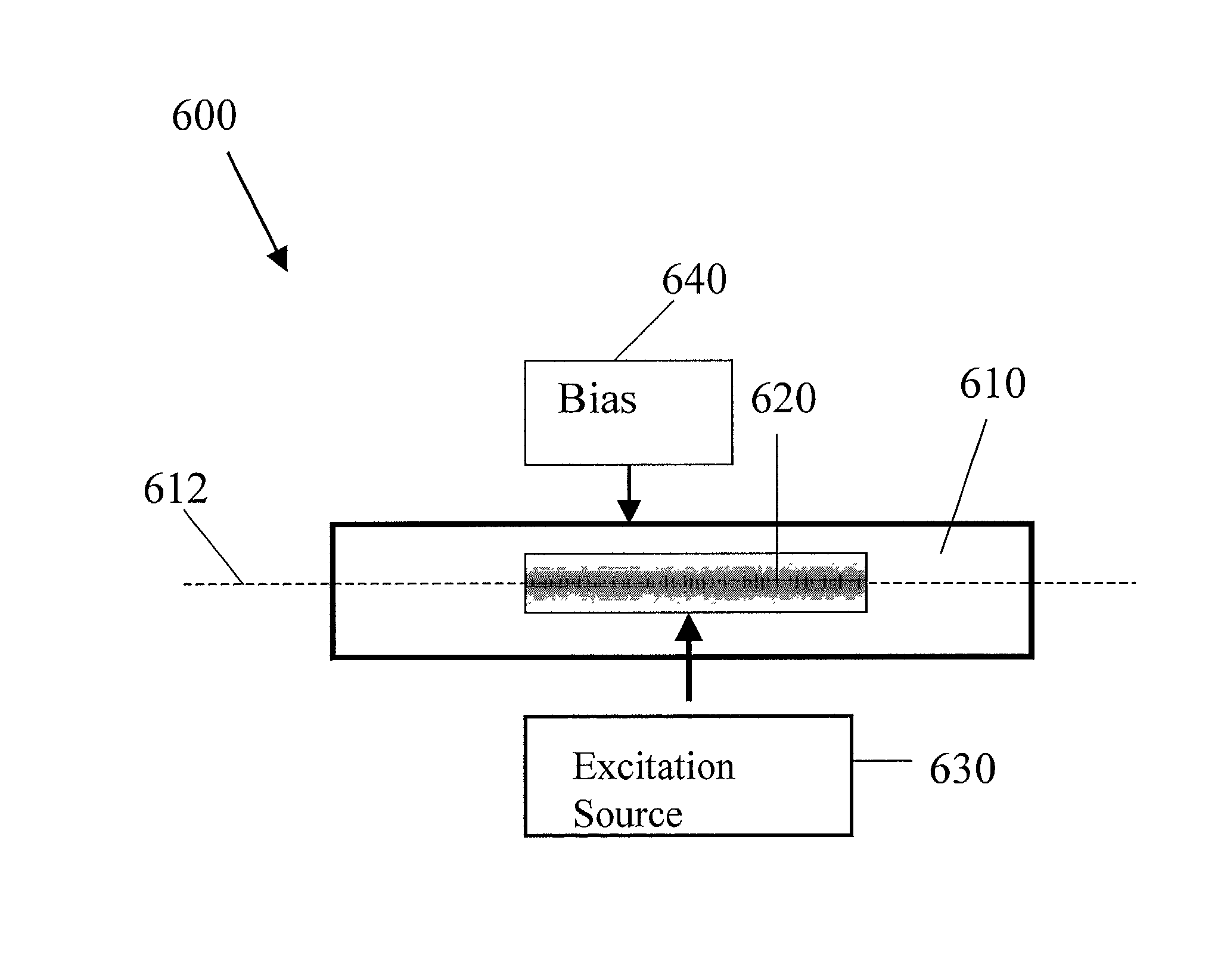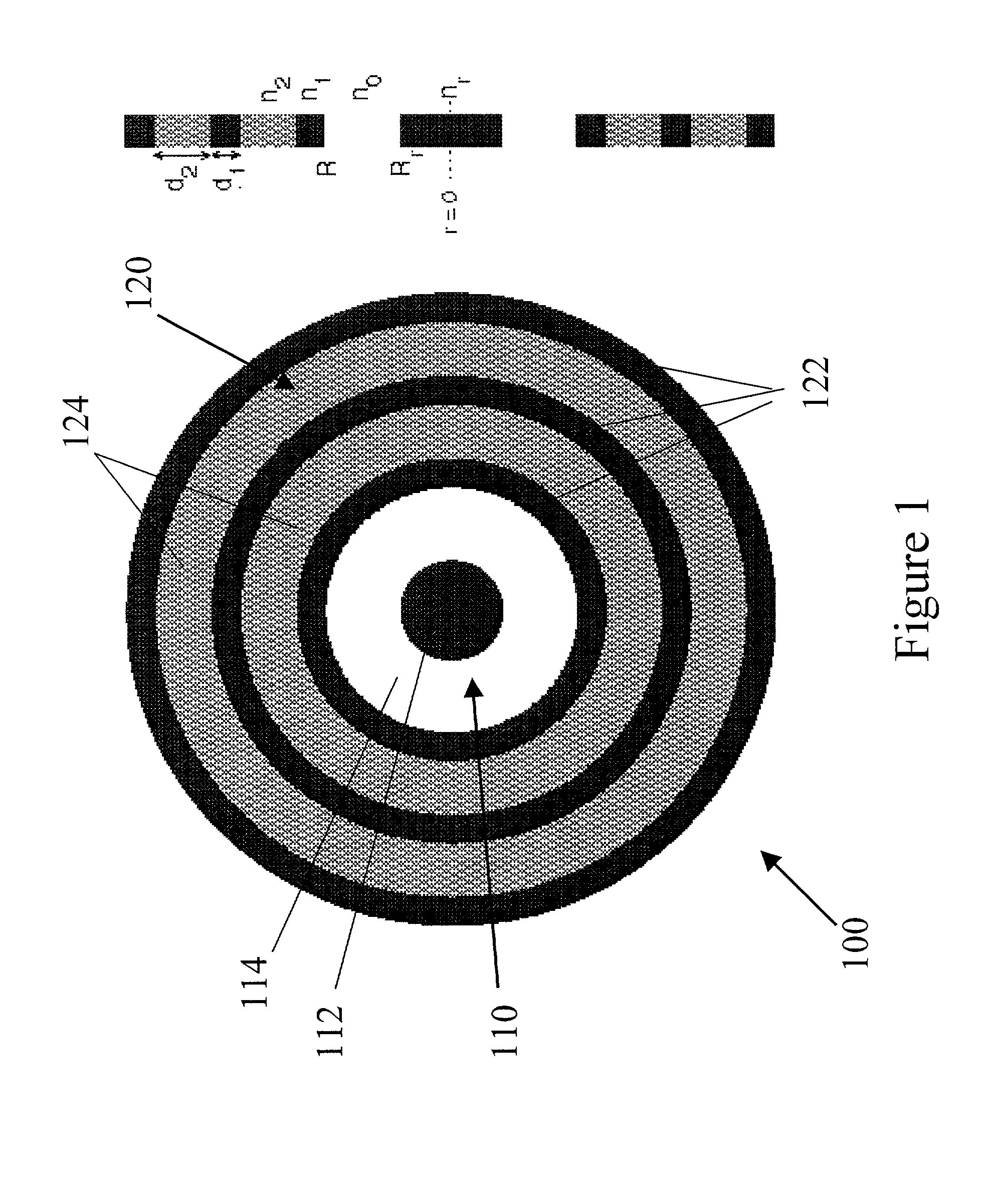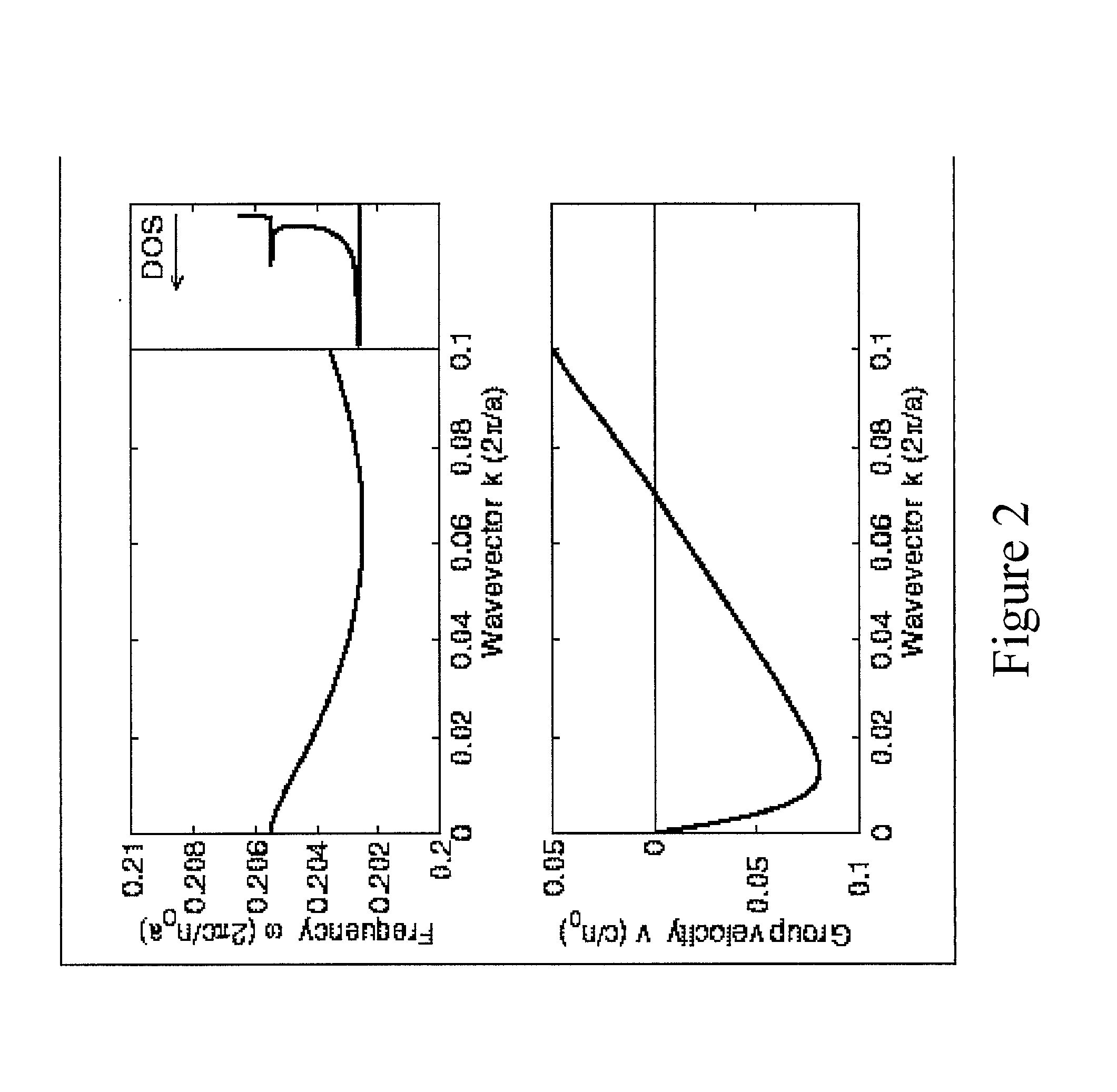Dielectric waveguide with transverse index variation that support a zero group velocity mode at a non-zero longitudinal wavevector
a transverse index variation and waveguide technology, applied in the direction of instruments, cladded optical fibres, optical elements, etc., can solve the problem that the usefulness of waveguides in the optical regime (e.g., 350 nm to 3 microns) is limited by their absorption, so as to avoid the optical loss associated
- Summary
- Abstract
- Description
- Claims
- Application Information
AI Technical Summary
Benefits of technology
Problems solved by technology
Method used
Image
Examples
Embodiment Construction
[0039] The invention relates to a dielectric structure having a longitudinal axis, such as a cylindrical dielectric waveguide 100, whose cross-section is shown in FIG. 1. Applicants have discovered that refractive index variations in the structure can be selected to cause it to support an electromagnetic (EM) mode that has a group velocity that changes sign over a range of non-zero wavevectors for the longitudinal axis.
[0040] Referring again to the particular embodiment shown in FIG. 1, waveguide 100 includes an inner region 110 and an outer region 120 surrounding the inner region. The refractive index variation in outer region 120 is selected to cause electromagnetic EM radiation propagating in inner region 110 to be substantially confined therein over at least one range of frequencies.
[0041] As shown in FIG. 1, for example, outer region 120 can be formed by an alternating series of concentric dielectric rings 122 and 124 having high (n.sub.1) and low (n.sub.2) indices of refractio...
PUM
| Property | Measurement | Unit |
|---|---|---|
| wavelengths | aaaaa | aaaaa |
| refractive index | aaaaa | aaaaa |
| group velocity | aaaaa | aaaaa |
Abstract
Description
Claims
Application Information
 Login to View More
Login to View More - R&D
- Intellectual Property
- Life Sciences
- Materials
- Tech Scout
- Unparalleled Data Quality
- Higher Quality Content
- 60% Fewer Hallucinations
Browse by: Latest US Patents, China's latest patents, Technical Efficacy Thesaurus, Application Domain, Technology Topic, Popular Technical Reports.
© 2025 PatSnap. All rights reserved.Legal|Privacy policy|Modern Slavery Act Transparency Statement|Sitemap|About US| Contact US: help@patsnap.com



